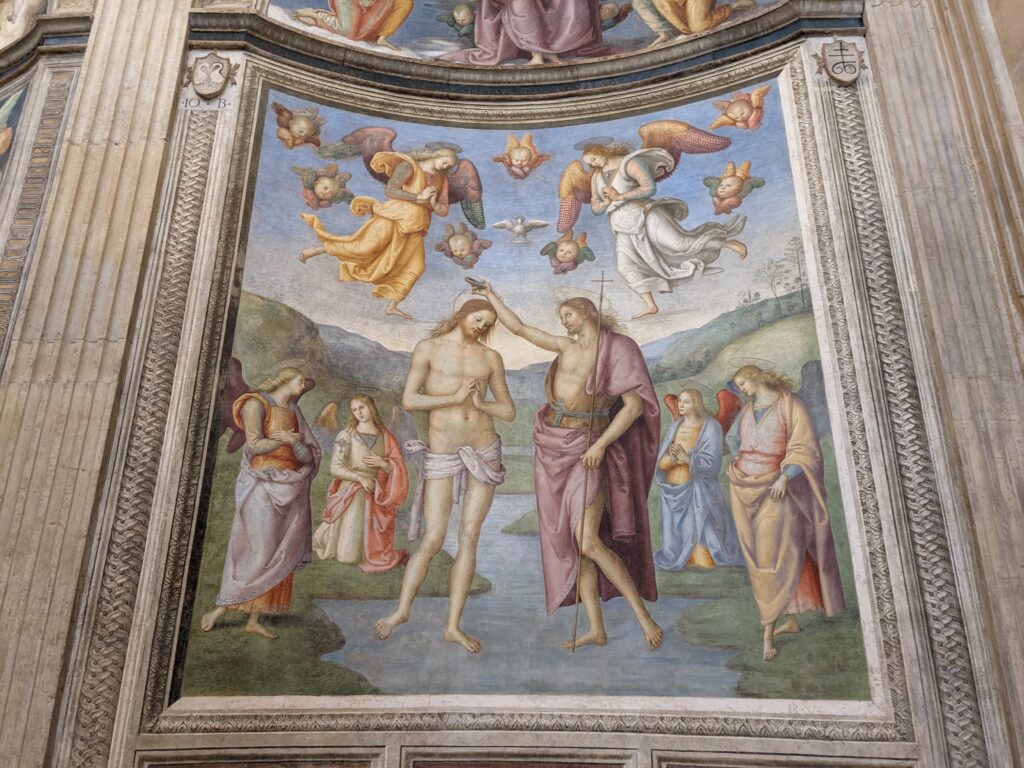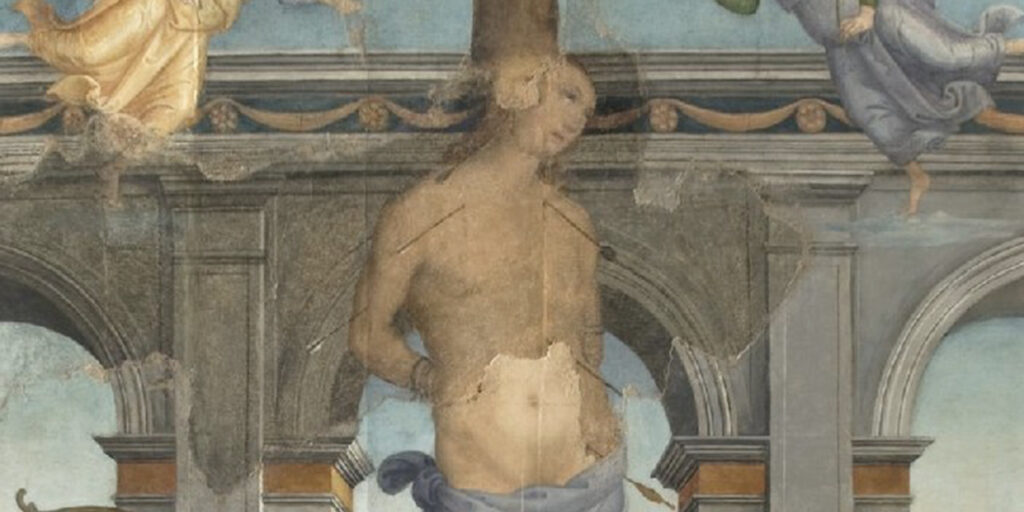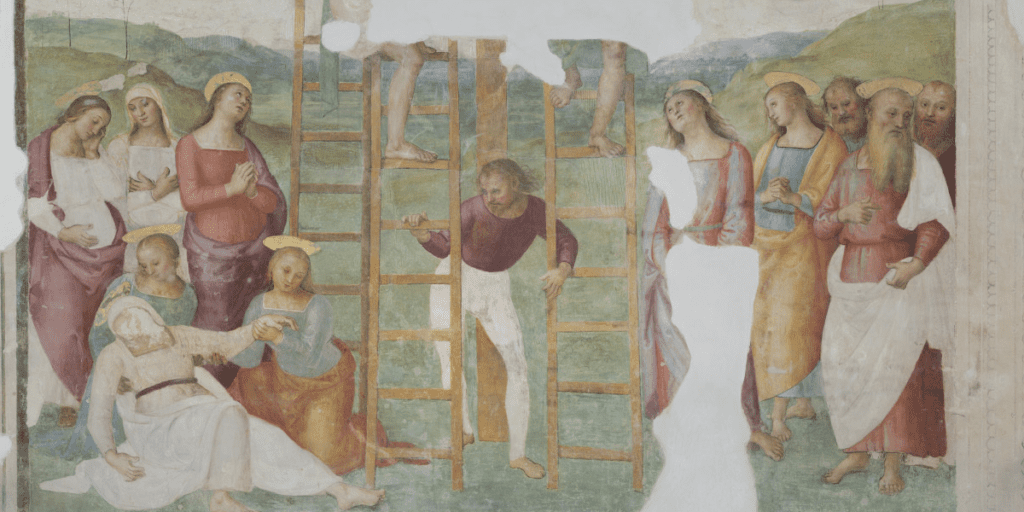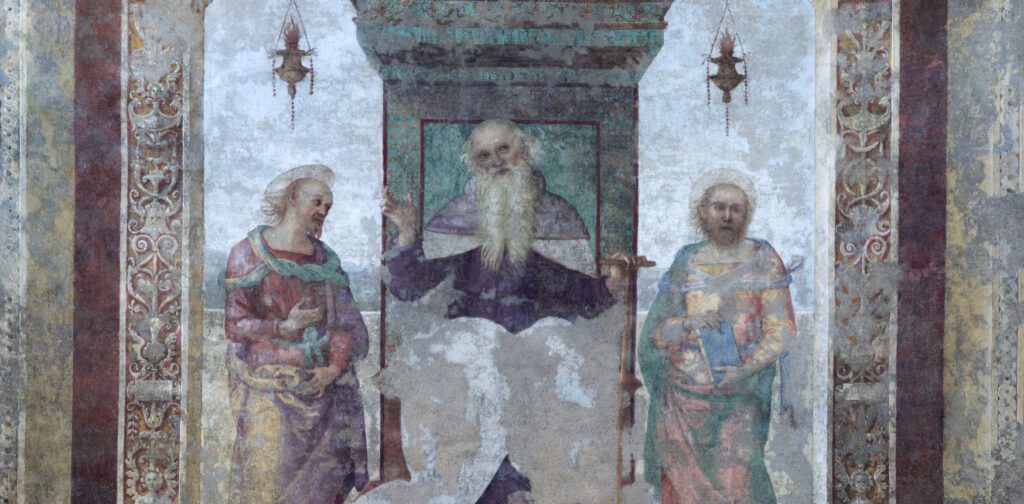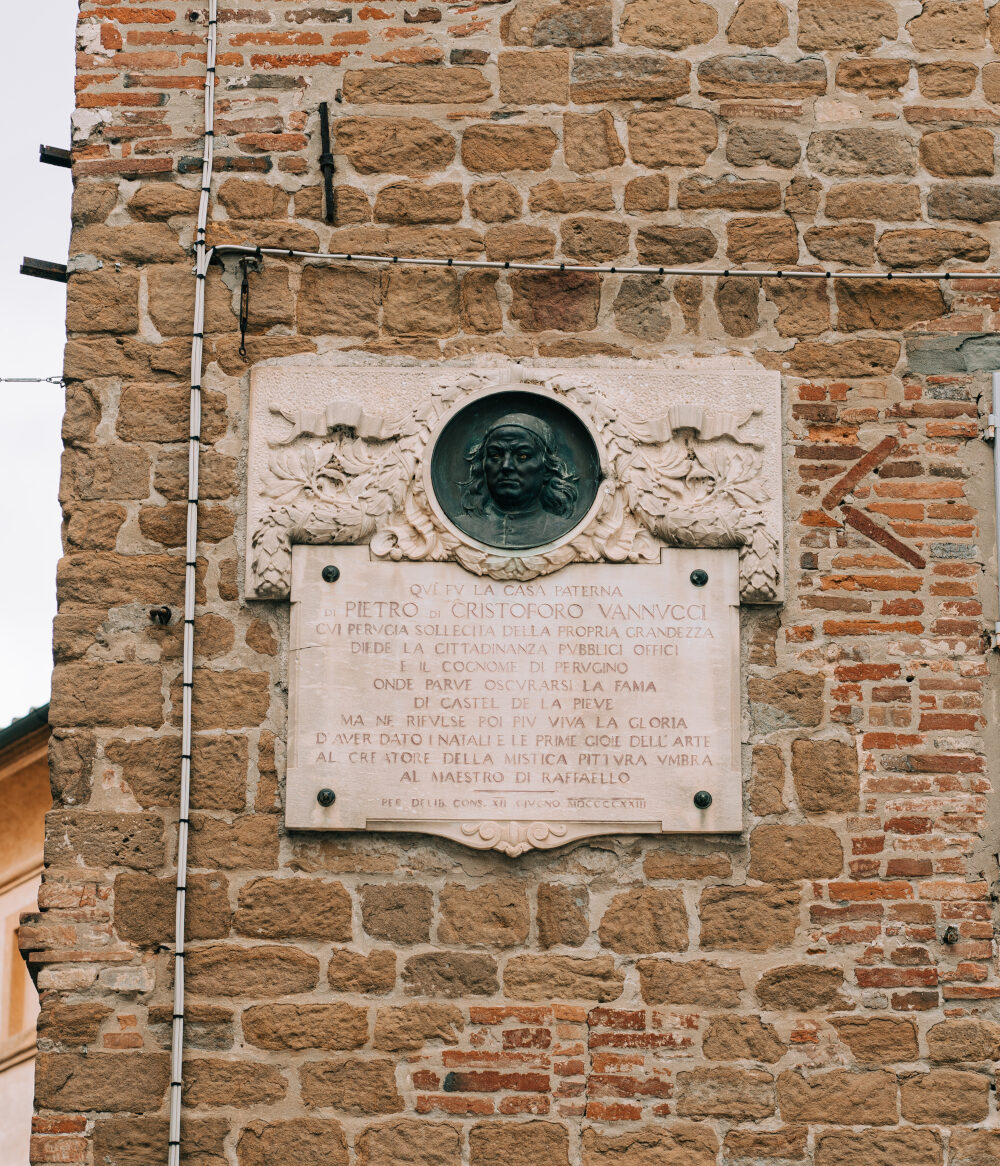
A biography of “Italy’s best master””
Pietro Vannucci, a.k.a. Perugino, was born in Castel della Pieve, now Città della Pieve in Umbria, Italy. We do not know precisely the day, not even the year; but according to a piece of information provided by Giorgio Vasari, when Perugino died in February or March 1523, he was 78 years old. So, he was supposedly born in 1445 or 1446.
The Vannucci family was then one of the most important and wealthy in Città della Pieve. Perugino’s father, Cristoforo di Pietro di Giovanni, held public office as a priore in 1459.
Vannucci as a family name comes from the artist’s great-grandfather’s first name, Giovanni (John), who used to be nicknamed Vanni or Vannuccio.
Pietro Vannucci is called il meglio maestro d’Italia, “Italy’s best master,” in a letter written in 1500 by Agostino Chigi, who was the banker of the Popes and a great patron of the arts. A late Medieval painter, Giovanni Santi, i.e. Raphael’s father, called Perugino nothing less than divin pittore, “divine painter,” in a poem.
The nickname “Perugino” by which he is more commonly known, while obviously referring to Perugia in his native Umbria, was given him outside Umbria. In fact, in the Libro rosso (Red Book) of the Compagnia di San Luca (the Saint Luke Brotherhood of artists) in Florence he was registered as Pietro da Cristofano da Perugia, “Peter, the son of Christopher from Perugia,” instead of Città della Pieve; Perugia being a much more famous town.
His training as a painter in Città della Pieve and Florence
Perugino’s training as an artist probably started when he was some 20 years old in his hometown, in a workshop managed by the sons of Niccolò di Bonifazi, a painter from Siena (Tuscany). We anyway know for sure that, about 1460, Perugino worked as an apprentice with Piero della Francesca in Arezzo (Tuscany). He would possibly follow Piero in Sansepolcro, Urbino, and Perugia, too.
In 1470 he reached Florence, and joined one of the then most famous art workshops, Andrea del Verrocchio’s. Many young artists had moved to Florence in order to improve their skills. Here in fact Perugino met Lorenzo di Credi, Ghirlandaio, Filippo Lippi, Botticelli, all the way up to Leonardo Da Vinci.
In 1472 Perugino’s name appeared among those listed in the book of the Saint Luke Brotherhood. So, this date marks the end of his apprenticeship in Verrocchio’s workshop, and the beginning of his career as an independent artist.
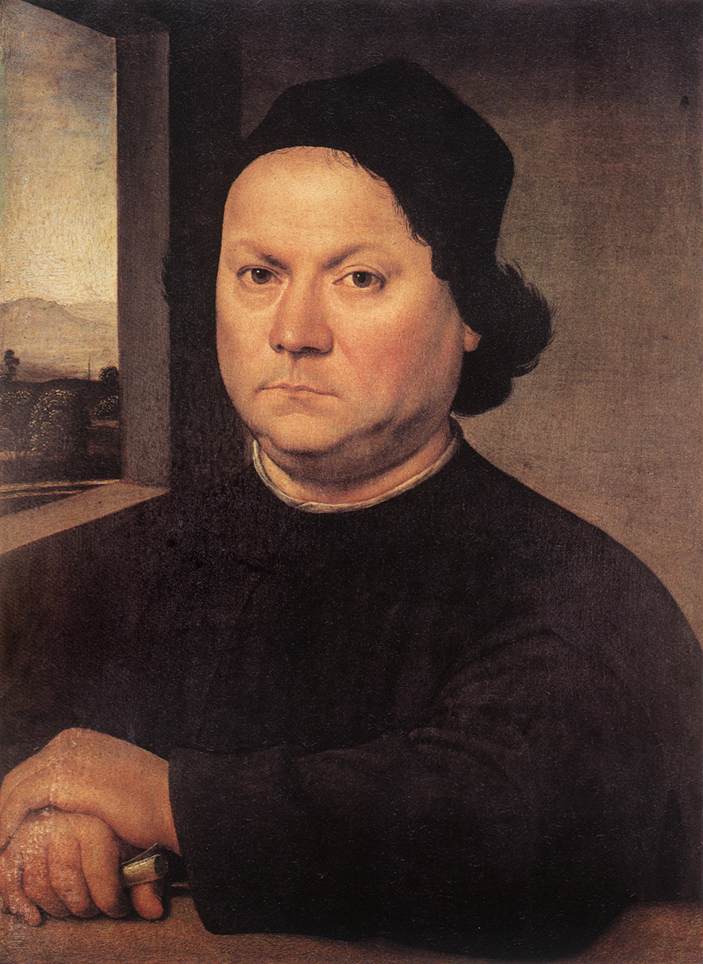
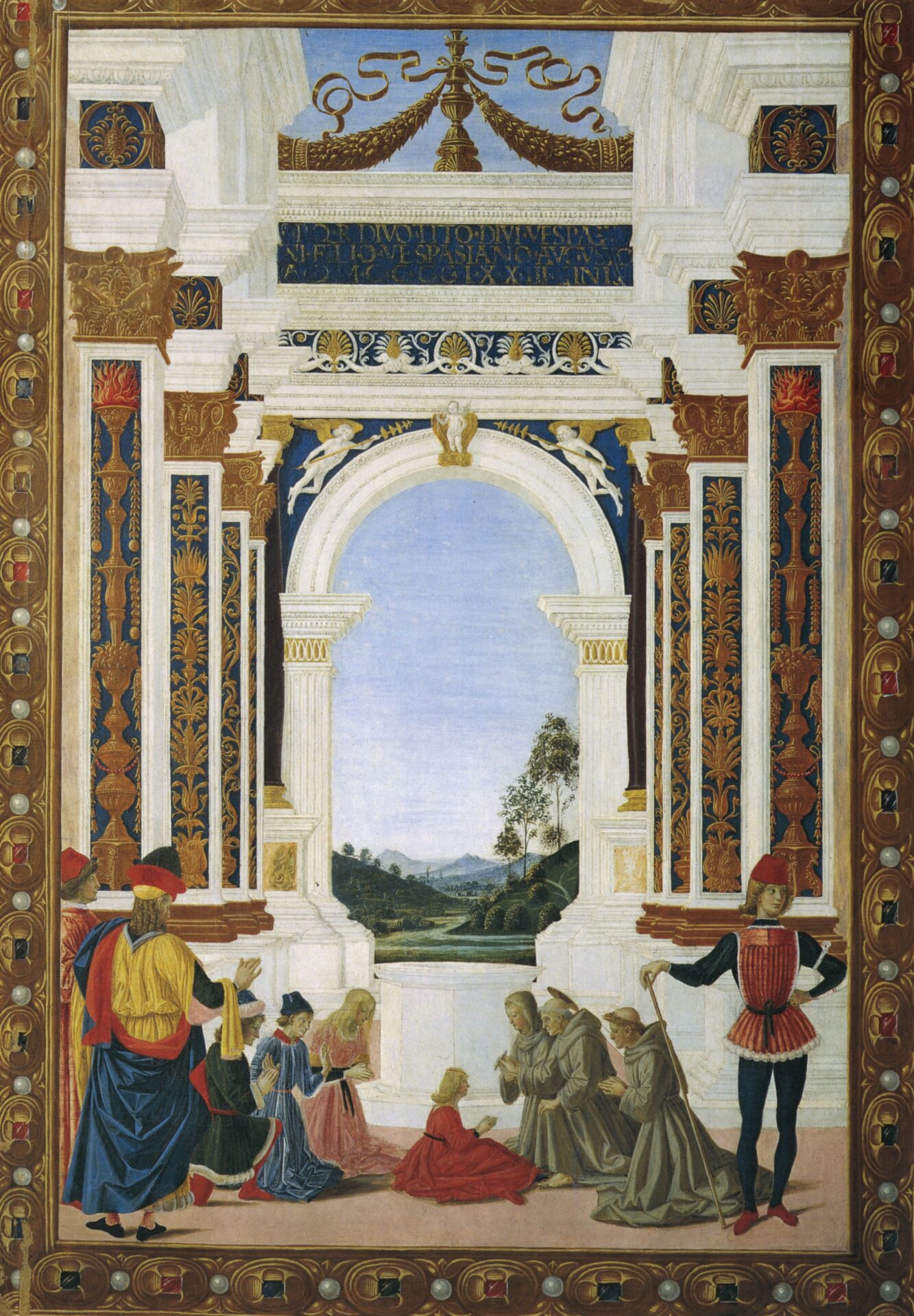
The first Perugia Period
Perugino’s first widely admired works date back to the 1470s. They were made in Perugia, where they can be seen still nowadays. Saint Bernardine’s Stories consist of eight small wood panels painted by a team of artists under Perugino’s leadership. The Adoration of the Magi was commissioned by the Baglionis, the Lords of Perugia.
Perugino’s works were especially appreciated in Perugia, so much so that in 1475 the Commune (City Hall) asked him to decorate the “Great Hall” in the Palace of Priors (the town’s rulers). Those paintings are no longer extant, but a document has survived that recorded the payment due to M. Petri pictoris de Castro Plebis, “Master Peter, painter from Castel della Pieve.”
Discovering Umbria through Perugino’s eyes
Guided tours on the track of “the best master in Italy”
Pietro Vannucci was one of the most famous and influential painters of the Renaissance. His paintings, requested all over Europe, were continually produced in the major and most influential workshops of Florence and Perugia. A rich selection of guided tours will make you discover the cities and little towns where Perugino lived and worked, and where a great part of his art heritage has been preserved.
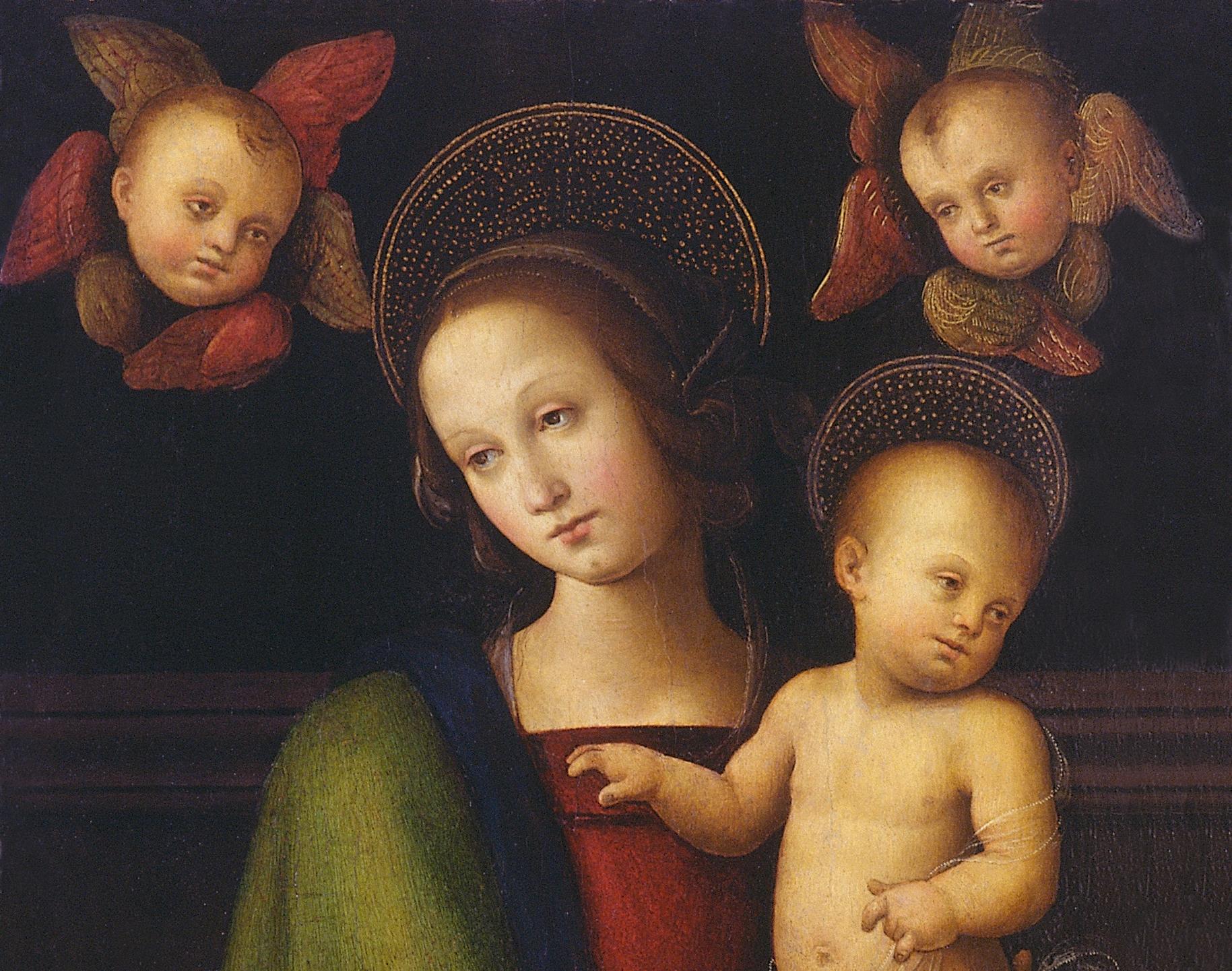
The Rome Period
In 1478 or maybe 1479, Perugino was invited to go to Rome by Pope Sixtus IV for a very prestigious job: decorating the apse of the Cappella della Concatenazione (Chaining Chapel) in Saint Peter’s Basilica – the older, not the current building – also known as Constantine’s Basilica. Unfortunately, his paintings would be destroyed in 1609, precisely when the church was demolished in order to build the new one.
Perugino’s style was much liked in Rome too; to the extent that, one year later, the Pope called him back to Rome in order to embellish the newly-built Sistine Chapel. It would take two years to decorate the chapel walls, while probably Perugino also supervised the other painters there: Botticelli, Ghirlandaio, Cosimo Rosselli, Pinturicchio, Piero di Cosimo, Luca Signorelli. The scene he himself worked on was the well-known Delivery of the Keys, a fresco in which Perugino included a self-portrait.
Success and new commissions
The success Perugino had obtained in Rome provided him with many commissions, as well as the honorary citizenship in Perugia, and the task of painting a Pala there, that is an altarpiece for the Priors’ Chapel inside the City Hall.
In 1493, Perugino married Chiara Fancelli, the daughter of an architect, Luca Fancelli. She would become his Muse, inspiring him for Virgin Mary’s face in his sacred paintings during the following years.
Among the most important works he was commissioned for by the Perugia Commune was The Marriage of the Virgin for the Chapel of the Holy Ring in Saint Lawrence’s Cathedral (the painting currently belongs to the Museum of Fine Arts in Caen, France). In 1498, Perugino also frescoed the hall in the Collegio del Cambio, “Exchange College,” the guild or corporation of money changers. He depicted the series of the Virtues.
In the same time lapse he worked in both Florence and Perugia. He happened to accept Raffaello Sanzio (Raphael) among the pupils in his workshop. Perugino’s fame had meanwhile reached Mantua, where Marchioness Isabella D’Este commissioned him for a canvas to be placed in her own Study: The Fight of Love and Chastity (1503).
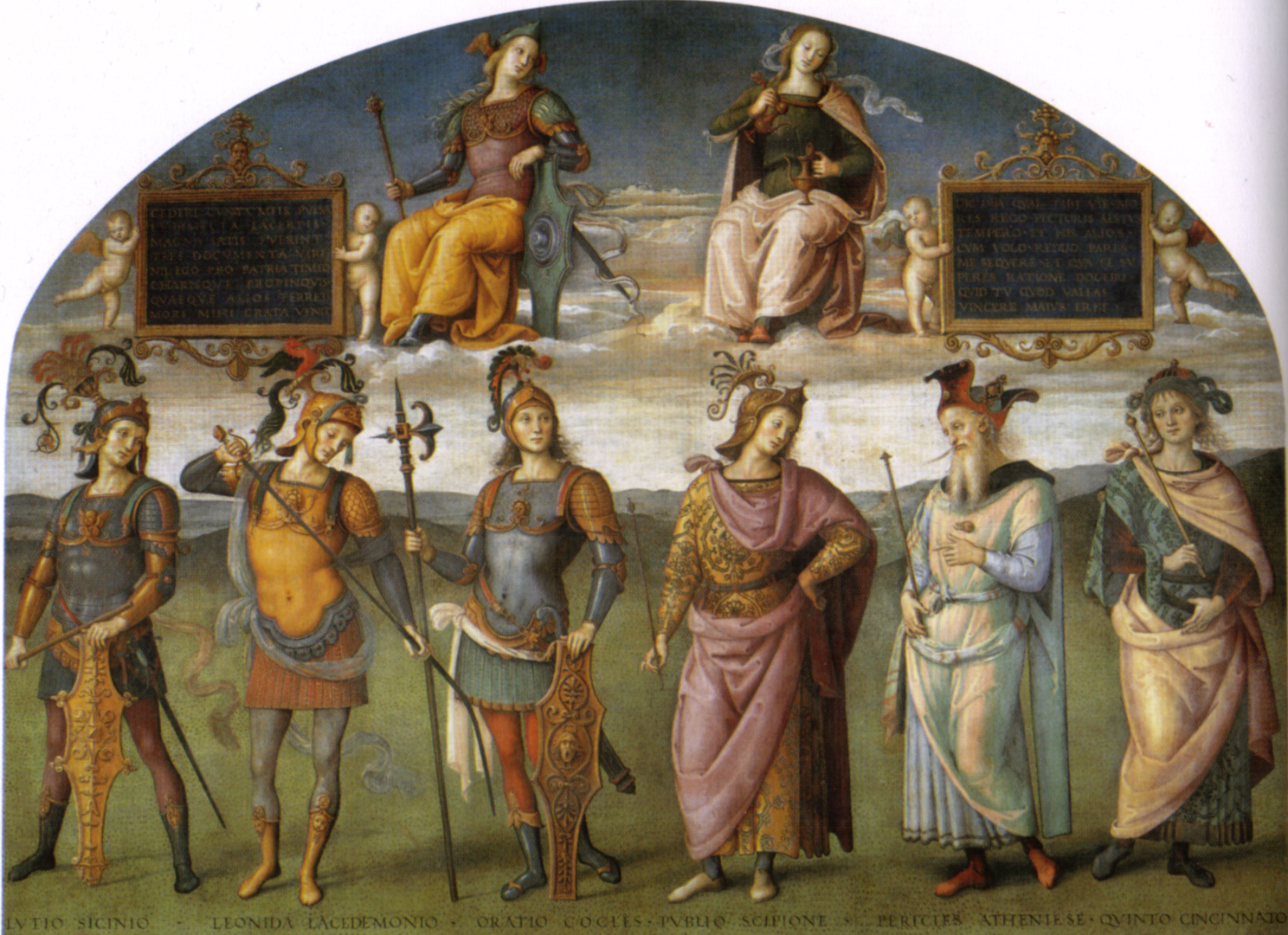
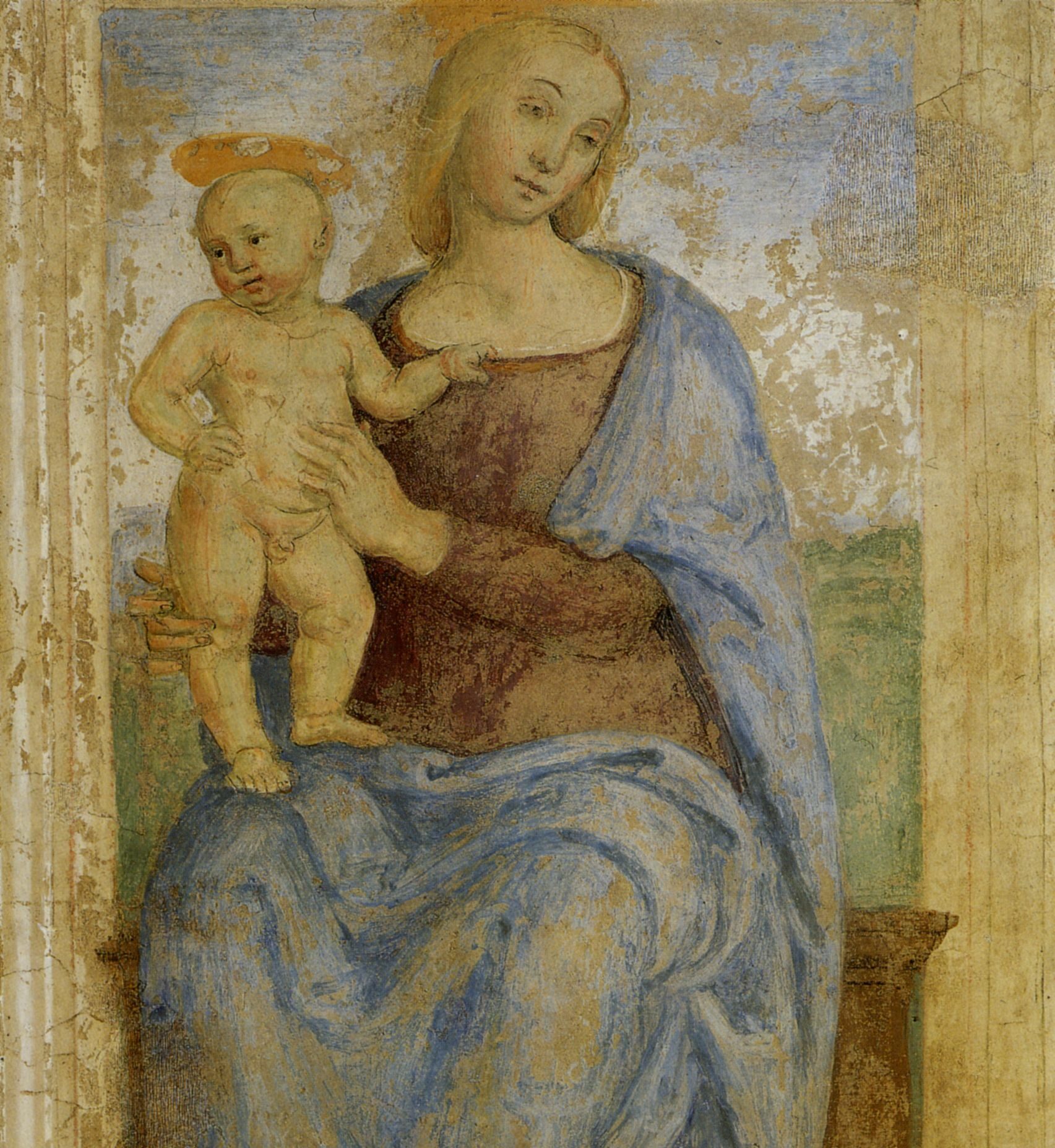
Back to Perugia, and last years
By 1504, Perugino was again active in Umbria, as shown by the number of works he left in Città della Pieve, Panicale, Perugia, Spello, Foligno, Trevi. This is why in most of the paintings he made in that period the landscapes of Umbria appear in the background. Those sweet hills, lakes, delicate hues did make his homeland famous and loved all over the world.
Pietro Vannucci died of the plague in 1523 in Fontignano, not far from Perugia; where he was buried under a tree. His remains were rediscovered no sooner than 1911, then transferred into a memorial in the Church of the Annunziata (Madonna of Annunciation). Here, he himself had frescoed the Adoration of the Shepherds; and his painting Virgin Mary with Baby Jesus can be still admired there.
The works of Perugino
Discover the testimonies of Perugino today
Routes and itineraries to discover the works of the divine painter
